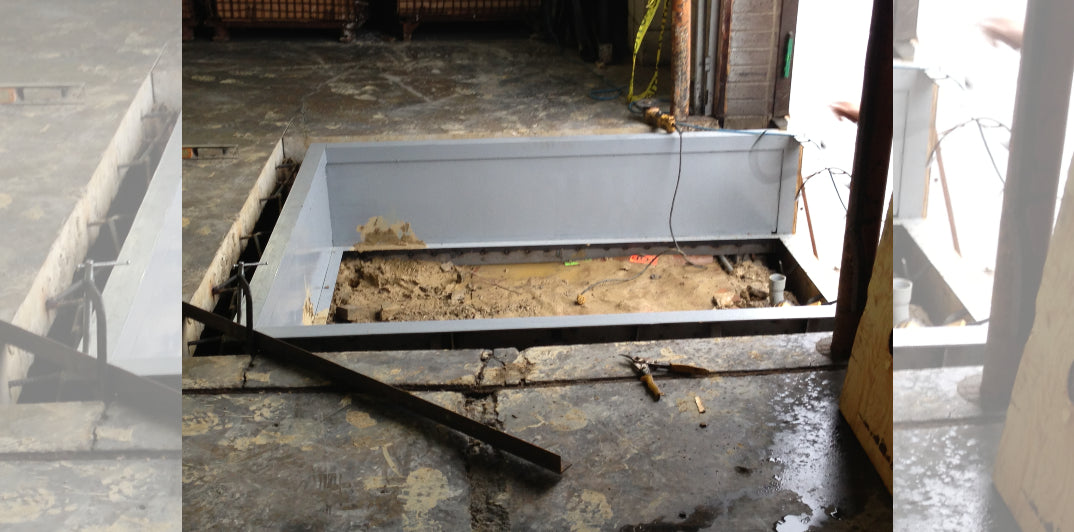DIY Tips for Simple Dock Repairs You Can Deal With
DIY Tips for Simple Dock Repairs You Can Deal With
Blog Article
Reliable Dock Repair Service Techniques: Guaranteeing Architectural Integrity
Ensuring the structural integrity of docks with effective repair service strategies is extremely important for the longevity and safety of marine centers. This involves a multi-faceted method starting with extensive examinations making use of innovative technologies like sonar devices and from another location ran lorries (ROVs) to discover both visible and hid problems. Ultimately, choosing the best fixing materials, such as composite materials and corrosion-resistant alloys, is vital for longevity. Architectural support techniques, consisting of the implementation of cross-bracing systems and load-distribution plates, play an important role in mitigating stress and anxiety factors. However, the significance of these strategies ends up being evident when discovering advanced repair work methods and preventative upkeep techniques.
Examining Dock Damages
Examining dock damage is an essential initial action in ensuring the architectural honesty and safety and security of any kind of docking center. Secret elements to take a look at consist of the dock's structure, pilings, decking, and equipment (Dock Repairs).
Architectural designers or certified examiners normally do these evaluations utilizing specialized devices and techniques. As an example, undersea evaluations might employ finder equipment or remotely operated vehicles (ROVs) to detect immersed damages. Above water, aesthetic assessments are enhanced by making use of dampness meters and other analysis devices to uncover underlying concerns not quickly visible to the naked eye.

Finding Repair Materials
Choosing the proper repair work products is a crucial action in the dock restoration process, one that directly influences the longevity and performance of the repaired framework. Material choice need to be driven by aspects such as ecological problems, load-bearing needs, and compatibility with existing dock parts. For circumstances, timber is a conventional selection for anchors as a result of its all-natural strength and visual charm. Selecting the right type of timber, such as pressure-treated lumber or normally rot-resistant types like cedar or teak, is critical to hold up against water atmospheres.
In addition to timber, composite materials are significantly prominent due to their durability and reduced maintenance needs. Compounds, usually made from a blend of plastic and timber fibers, offer superb resistance to rot, insects, and UV damages. For metal anchors, choosing corrosion-resistant alloys such as galvanized steel or marine-grade aluminum is important to protect against rust and make certain structural honesty in saline water conditions.
Epoxy materials and marine-grade sealants are important for repairing fractures and securing joints, giving a water resistant obstacle and boosting the dock's overall stamina. By thoroughly choosing high-grade products, dock fixings can achieve lasting results, therefore guarding against future degradation and making sure secure, trusted usage.
Structural Reinforcement Techniques
Reliable structural reinforcement techniques are crucial in making sure the security and durability of dock repair work. This technique is particularly effective for anchors subjected to heavy loads or harsh ecological conditions.
An additional crucial method is the application of fiber-reinforced polymers (FRP) These materials offer high strength-to-weight proportions and superb resistance to rust, making them optimal for strengthening concrete or wooden anchors. FRP can be applied in strips or sheets and adhered with epoxy resins to enhance architectural stability.
Bracing and securing systems likewise play an important role in architectural support. Cross-bracing, using steel or wooden beams, can combat lateral pressures, minimizing swaying and activity. Anchoring systems, such as helical piers or driven piles, supply a steady foundation by transferring loads to much deeper, a lot more steady dirt layers.
Lastly, the integration of load-distribution plates can aid distribute weight much more evenly throughout the dock's surface, mitigating local stress factors. These methods collectively make certain that docks continue to be risk-free and durable, capable of enduring the roughness of their functional atmosphere.
Advanced Repair Techniques

An additional advanced technique includes undersea welding, which enables fixings to be conducted without the requirement to dewater the area. This approach is specifically helpful for attending to structural problems in immersed dock elements, guaranteeing minimal disturbance to operations. Boosted welding techniques, combined with robotic systems, deliver precision and reliability, thus extending the life expectancy of the dock.
Additionally, cathodic defense systems are carried out to avoid deterioration in metallic dock structures. By utilizing sacrificial anodes or impressed existing systems, these methods properly mitigate the electrochemical processes that bring about product degeneration.
Finally, advanced surveillance innovations, such as structural wellness tracking (SHM) systems, offer real-time information on the problem of dock structures. These systems make it possible for positive maintenance and prompt interventions, inevitably making sure the long-term architectural integrity of the dock.
Upkeep and Prevention
Upkeep and prevention are basic ideas that underpin the longevity and security of dock structures. Routine inspections are extremely important, enabling very early detection of damage, potential weak points, and environmental influences. A proactive technique, involving regular checks for rust, rot, and structural shifts, mitigates pricey repair work and lengthens the dock's functional life.
Preventive procedures ought to consist of applying safety finishings to metal elements to secure against rust and utilizing cured wood to stand up to decay. Furthermore, making certain appropriate water drainage and ventilation can stop water accumulation, which is a typical reason of structural deterioration. Incorporating top quality materials and adhering to supplier guidelines during building and construction and repair work stages additionally play critical roles in improving sturdiness.

Training personnel in dock upkeep ideal techniques makes sure constant application of safety nets. Leveraging technological breakthroughs, such as drones for examinations and sensing units for real-time tracking, can further boost upkeep efforts. By prioritizing upkeep and prevention, dock owners can make certain architectural stability, operational safety and security, and cost-efficient monitoring over the dock's life expectancy.
Final Thought
In conclusion, keeping the structural integrity of aquatic facilities demands detailed dock repair work techniques. their website Detailed evaluations using sophisticated tools reveal both visible and hid damages, while the option of suitable repair materials boosts sturdiness. Executing architectural reinforcement approaches addresses tension factors efficiently. Advanced fixing methods, paired with regular upkeep practices, make sure the dock remains risk-free and functional under diverse environmental conditions. Taking on these strategies substantially prolongs the life expectancy and capability of aquatic infrastructure.
Making certain the architectural integrity of docks through efficient repair service strategies is extremely important for the long life and safety of aquatic centers.Selecting the suitable repair work materials is an essential action in the dock repair procedure, one that straight affects the durability and efficiency of the repaired structure.Effective structural reinforcement methods are important in making certain resource the security and long life of dock repair services. By prioritizing upkeep and avoidance, dock proprietors can make sure structural stability, operational safety, and cost-effective administration over the dock's life expectancy.
In final thought, maintaining the structural honesty of aquatic facilities necessitates comprehensive dock fixing strategies.
Report this page